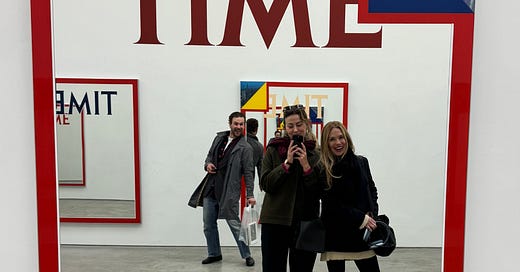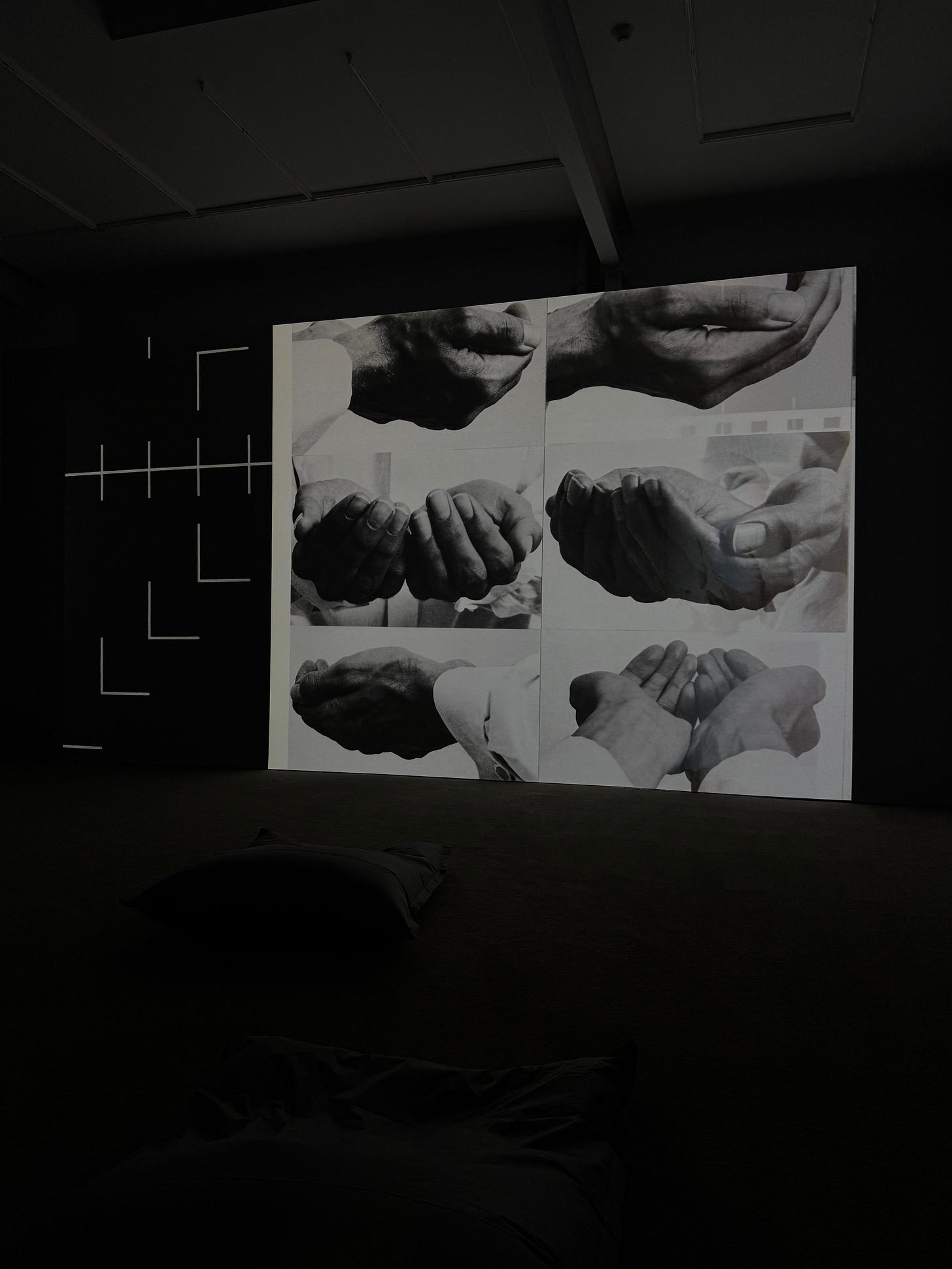I have a time-based scarcity mindset when it comes to art. There simply isn’t enough time to see all the art I want to see—so there certainly isn’t time to see art I don’t like. When I visit a museum I skip over the cubists or b-sides of Renaissance paintings to focus on that art that makes me pause. When I enter a gallery and the work on display is lacking, I do a quick obligatory lap before departing.
Maybe I’ve been doing it all wrong.
A few days ago, I stopped outside Mungo Thomson’s show at Karma in the East Village and refused to go in. I’d seen his Time Magazine mirrors at almost every art fair I’d been to in the last few years and found them commercial and vapid (this didn’t stop me from taking a selfie, of course). I love Karma’s program, so I was confused about these works. I thought they would be better suited on a wall alongside KAWS than Ann Craven.
With some gentle persuasion from Keiran and my friend Celina, I decided to go in despite my preconceived notions of his work. In an art fair setting, the work is detached from its conceptual practice and becomes a commodity. By skipping it without a second thought, I was missing out on work that I ended up liking both aesthetically and conceptually.
The iconic Time Magazine covers create an infinity loop across from each other, not unlike the stop motion used in the Time Life video piece. While looking at the mirrored works, it was impossible not to also look at myself. Of course, I took lots of photos. Through these analogue methods (stop motion, opposing mirrors), Thomson creates rapidly changing images—how does one look at an infinite image? Where does the image stop? There is the sense that the information presented will continue forever. While watching the video, I felt my body moving in time with the shifting images and immersive beat.
Time Life had a lot of similarities to Christian Marclay's The Clock, which I swung by MoMA to see (from 12:20-1:05). While The Clock was made pre-pre-TikTok in 2010, and Thomson started making his Time Life series in 2014, their pacing matched our current attention spans. Images shift rapidly, not allowing any time for boredom. The result is a trance-like experience. When I looked around the room at Karma, everyone watched Thomson’s video piece with their mouths hanging open.
What this all comes down to—both Thomson’s art practice and my own sense of dwindling time—is attention spans. The reference encyclopedias that Thomson’s video work draws from had an abundance of information to flip through and seek out. Now, we have a continuous stream of information relayed to us passively. The intention is gone, and the result is lowered attention and scarcity around the time we have. Rather than read an entire book on a subject, I’ll listen to a 20-minute podcast. Rather than see art I might not like, I skip ahead to the next gallery.
While I think it's important to exercise some discretion when looking at art (we cannot read all the books in the world and do not need to see all the paintings in existence), it’s also important to stay open-minded. The result is a pleasant surprise.
I would love to hear what work you originally wrote off before coming around to loving it—leave a comment or send me an email xx.







Ellsworth Kelly and a number of other minimalist artists always left me a bit cold. They were works I would glance at and move on from quickly without really thinking about what the artist was trying to achieve or understanding the thinking behind the pieces. Kelly for instance, with his flat color and simple geometric canvasses were easy to skip past, especially when seen as a single work in a museum setting. It wasn’t until I saw a retrospective show of his work that I truly grasped what he was saying. Seeing a large body of his work together in a single setting gave me a greater appreciation for his work and the work of other minimalist like Donald Judd.
You raise an interesting philosophical question. Just how important is Art literacy? Does the Renaissance B side tell you nothing of its more notable brethren? If context is essential to understand or appreciate Art, if all artist struggle to give form to unconscious emotion, are not all art forms shrouded equally in mystery?